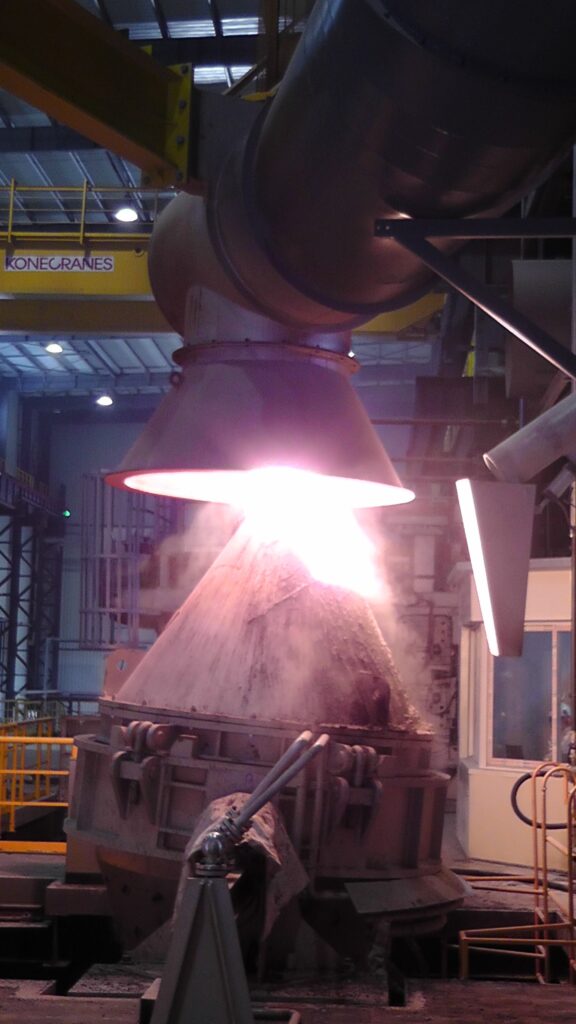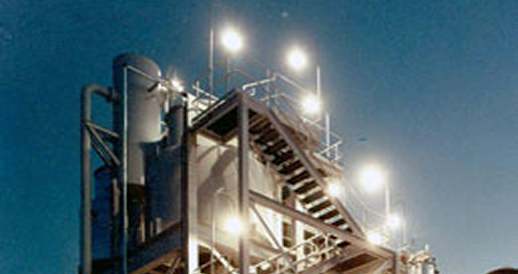Introduction
Efficient material handling is the backbone of every melt shop. From transferring molten steel to charging furnaces, the reliability and precision of handling equipment directly affect throughput, safety, and productivity. Melt-shop managers face growing pressure to meet tighter takt times, reduce downtime, and integrate smarter control systems—all while protecting workers in one of the harshest industrial environments.
This article examines the key components of melt-shop material handling, including ladle transfer cars, charging systems, and ladle preheat equipment. We’ll examine throughput requirements, duty cycles, safety systems, automation, and maintenance, and provide a specification checklist to support RFQ evaluations.
Throughput Requirements & Takt Time
Every melt shop operates to a rhythm defined by takt time—the allowable cycle time per unit of production.
Takt time is calculated as:
Available production time ÷ Required output
For example, if a caster must produce 2,000 tons in a 12-hour shift, the takt time is about 22 seconds per ton. Every supporting system—from the ladle transfer car to the charging bucket—must work within this rhythm.
If the ladle transfer car cannot deliver molten steel in step with takt time, it becomes a bottleneck. Similarly, if ladle preheating takes longer than the interval between furnace taps, a shortage of ready ladles can halt production.
High-performance melt shops treat takt time as a primary specification driver. This ensures that handling systems are designed not only for static capacity but also for cycle consistency.
In real-world melt shops, takt time isn’t just theory—it shows up in bottlenecks. A furnace tap delayed by even five minutes because a ladle transfer car is unavailable can ripple downstream, forcing casters to slow or stop. Over the course of a week, these small delays compound into tons of lost production. That’s why many facilities invest in redundant transfer paths or dual-car systems. Even if one car is undergoing maintenance, the second can keep molten steel moving. This redundancy is often cheaper in the long run than the cost of lost production time.

Ladle Transfer Cars: Duty Cycles & Safety
The ladle transfer car carries hundreds of tons of molten steel across short but critical distances, and it must do so repeatedly, day after day.
Duty Cycles
Cars are expected to complete hundreds of cycles daily. Each cycle subjects the car to high temperatures, dynamic loading, and mechanical stress. Structural steel must be specified for both static ladle loads and dynamic braking forces. Designs that ignore duty cycles often show premature fatigue or deformation in frames and wheel assemblies.
Load Capacity
Transfer cars are commonly designed for 80- to 300-ton ladles. Some facilities over-specify their load capacity to accommodate future furnace upgrades or heavier tapping weights. Over-design improves safety margins but adds cost; under-specification risks catastrophic failures.
Speed and Stopping Distance
Operating speeds typically range from 20 to 60 meters per minute. Too slow, and takt time cannot be met; too fast, and stopping distance becomes unsafe. Modern cars use variable-frequency drives (VFDs) to balance cycle time with controlled deceleration. Redundant braking systems—mechanical, hydraulic, and electric—are now standard in new builds.
Safety
Carrying molten metal through a shop demands failsafe systems. Emergency stops, rail alignment sensors, obstacle detection, and integration with plant PLCs ensure that cars operate only when the path is clear. Safety PLCs prevent collisions with charging stations or caster bays.
Braking, Steering, and Load Control
A critical yet often overlooked aspect of ladle transfer car design is braking and steering. Modern cars usually incorporate multiple braking systems—dynamic electric brakes for everyday operation, mechanical disc brakes for redundancy, and emergency magnetic track brakes for worst-case scenarios. Stopping distances are calculated for fully loaded ladles at maximum speed, ensuring that even in failure conditions, the car can come to a halt within safe limits. Steering systems are increasingly being automated with laser or radar guidance, which helps align cars precisely under pouring spouts or preheat stations.
Charging Buckets & Charging Cars: Design Choices
Charging systems determine how efficiently raw materials are introduced into the furnace. The choice between buckets and cars depends on furnace size, scrap mix, and takt time.
Charging buckets remain the global standard for scrap charging in EAFs. They are rugged, simple, and efficient for handling bulk scrap. But design matters:
- Bottom-discharge buckets dump quickly but can create higher impact forces on refractories.
- Side-discharge buckets provide more controlled delivery, reducing wear but requiring more space.
Charging cars offer more precision. Scrap or DRI is moved directly into the furnace, often in smaller, controlled loads. Cars reduce thermal shock, evenly distribute scrap, and enable continuous charging for certain operations.
Modern charging systems increasingly integrate with automation platforms. Sensors measure fill weights, sequence charges, and prevent overfilling. This reduces human error and improves consistency across heats.
Wear and Energy Considerations
Different charging methods also carry implications for long-term wear and energy use. High-speed bottom-dumping buckets, for example, can accelerate refractory wear, requiring more frequent repairs. Charging cars, while slower, distributes material more evenly across the furnace hearth. This not only protects refractories but can reduce power-on time by maintaining a more stable bath. Energy savings of even 5–10 kWh/t, when multiplied over thousands of heats annually, add up to hundreds of thousands of dollars in reduced costs.
Ladle Preheat & Lining Care
The lifespan of a ladle’s refractory lining depends heavily on preheating practices. Introducing molten steel into a cold ladle risks thermal shock, spalling, and premature failure.
Burner Systems
High-efficiency burners can reduce fuel use by 15–20% compared with older designs, while achieving uniform refractory heating. Consistency is critical; uneven preheating creates weak spots in the lining.
Lining Monitoring
Laser scanning and thermal imaging are now standard tools for lining management. Operators can predict wear rates and schedule relining before dangerous breakouts occur.
Throughput Alignment
Preheat stations must be aligned with takt time. If preheating lags behind furnace output, operators may run short of hot ladles, forcing production delays. Plants with multiple converters often install redundant preheat stations to avoid this bottleneck.
Proper preheating adds hours to each ladle campaign, reducing maintenance costs and unplanned outages.
Fuel Use and Emissions
Preheating isn’t only about refractory life—it is also a significant energy consumer. Older preheat stations often rely on inefficient burners that waste fuel and generate excess CO₂. Upgrading to regenerative burners or oxy-fuel systems can cut fuel use by 20% while lowering emissions. With regulators tightening reporting requirements on Scope 1 emissions, even incremental gains in burner efficiency improve both compliance and operating economics.

Controls, Interlocks & Remote Monitoring
Modern material handling systems are as much about intelligence as they are about mechanics.
- Interlocks: Prevent unsafe operation when personnel are detected in restricted zones. For example, a ladle transfer car cannot move if maintenance gates are open.
- Load cells: Integrated weighing systems provide precise ladle weights, enabling accurate tapping and alloying adjustments.
- Heat shielding & cabling: Electrical components must be insulated against radiant heat from molten metal. Failures in these areas are a frequent cause of downtime in older systems.
- Remote diagnostics: IoT-enabled sensors now monitor motor vibration, brake wear, and wheel alignment in real time. Issues are flagged before they cause costly stoppages.
Integration with higher-level automation (Level 2 and MES) enables shop managers to view equipment status alongside furnace and caster performance, providing a unified operations picture.
Integration with Plant Automation
Controls are no longer isolated systems. A ladle transfer car equipped with remote monitoring and PLC integration can feed live data into plant MES and ERP platforms. This allows managers to track not just where equipment is, but how efficiently it is running. Advanced systems generate alerts when cycle times begin to drift upward, signaling that components may require inspection. Remote diagnostics also enable vendors like Whiting to provide off-site troubleshooting, thereby reducing downtime by resolving issues without requiring an on-site visit.
Maintenance & Spares
Material handling systems operate continuously in extreme conditions. Maintenance must be proactive rather than reactive.
Planned maintenance involves regular inspections of wheels, rails, couplings, and braking systems. Even small cracks in a wheel flange can lead to derailments if left unchecked.
Predictive maintenance is now enabled by vibration and temperature sensors. By analyzing condition data, maintenance teams can address wear before it becomes critical.
Spares philosophy matters. Stocking motors, couplings, brake pads, and key electrical components ensures outages are measured in hours, not days. Plants with lean spares policies often pay more in lost production than they save in inventory costs.
KPIs such as mean time between failures (MTBF) and overall equipment effectiveness (OEE) are increasingly used to measure the reliability of handling systems.
Specification Checklist
When preparing RFQs, melt shops should insist on detailed specifications to ensure vendor proposals align with real operating requirements.
- Load capacity and duty cycle: Confirm the car or bucket can handle both the maximum load and the expected daily cycles.
- Travel speed and braking: Specify both the maximum operating speed and the safe stopping distance under full load.
- Ladle compatibility: Ensure transfer cars accommodate current and future ladle geometries.
- Load cell accuracy: Weighing tolerances should match furnace alloying requirements, often ±0.5%.
- Heat protection: Define insulation standards for cables, sensors, and electrical boxes.
- Automation and interlocks: Confirm compatibility with existing PLCs and MES systems.
- Remote monitoring: Requires diagnostics for motors, brakes, and drive systems.
- Service and spares: Vendors should demonstrate the availability of critical spares and local service support.
A structured checklist not only supports RFQ evaluations but also helps prevent underspecification of critical features that affect long-term reliability.
Conclusion
Melt-shop material handling is not an auxiliary function—it is a throughput-critical system that determines whether furnaces and casters meet production targets. The ladle transfer car, charging systems, and ladle preheat stations must be specified with careful attention to takt time, safety, and integration with the plant’s automation system.
Whiting has decades of experience in engineering and delivering robust handling systems across North America. From transfer cars equipped with advanced diagnostics to charging systems optimized for takt time, we help steelmakers maximize throughput and minimize downtime.






